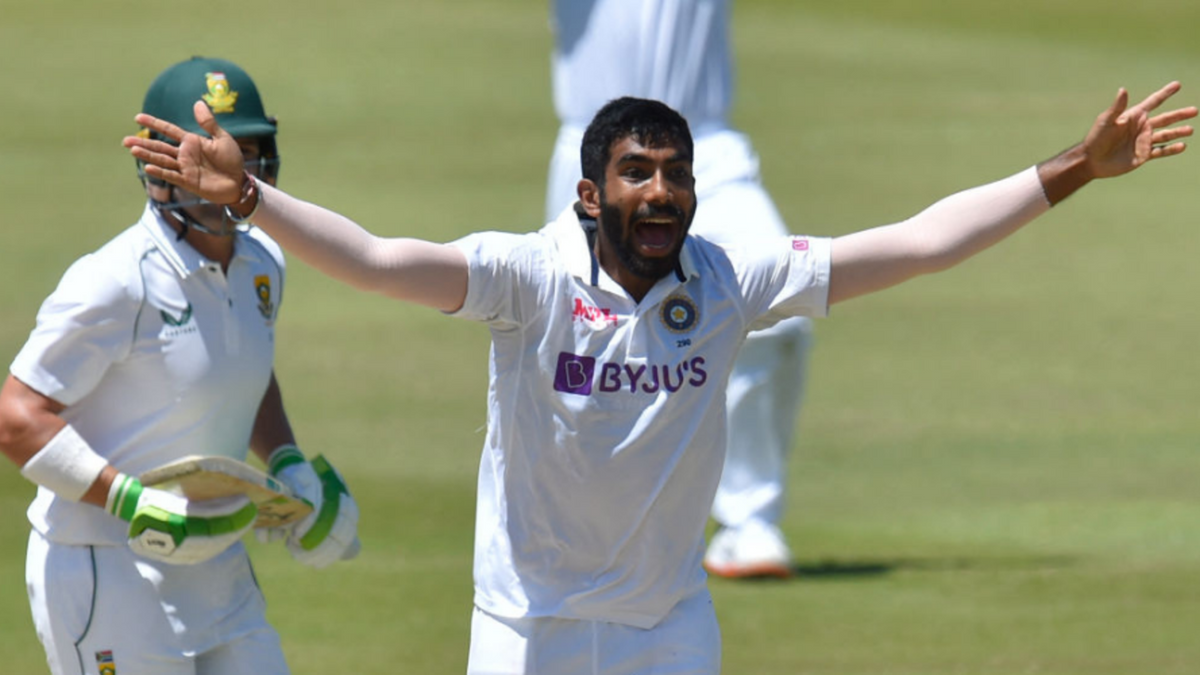
The Centurion Test was merely another illustration of how potent India’s pace attack has become since the arrival of Jasprit Bumrah, writes Divy Tripathi.
Zaheer Khan & co. made India’s pace attack a serious proposition away from home, often capable of competing and even winning Tests in places like Australia, England, and South Africa. But at no stage did India fast bowling look like they’d ensure dominance for a string of Tests away from home (an important element of India’s success was their all-star batting line-up), and it was almost unthinkable to consider them better than the attacks of South Africa or Australia in their own backyard.
Things changed after 2015. India’s new aggressive skipper seemed to back the bowlers a lot more, and India’s pacers got good guidance under Bharat Arun. Still, there were concerns: there were fitness issues, questions remained as to whether the likes of Mohammed Shami, and Ishant Sharma would be able to turn it around in SENA (South Africa, England, New Zealand, Australia) countries, and there was no one defined leader of the pace attack.
India were able to turn things around in 2018, even if the results didn’t go their way on the first couple of tours. But a refurbished pace attack looked not only like it could pick 20 wickets away from home, but sustain India’s dominance in crucial stages of the match. This period saw Shami and Ishant prove themselves away from home, India found a bunch of young pace options to replenish their lineup in case of an injury, but inarguably the most defining change was the arrival of Bumrah, who not only became India’s best fast bowler in this period but also the leader of their pace attack.
At 21.95, Bumrah is only second to Glenn McGrath in bowling averages for all fast bowlers with at least 100 Test wickets away from home this century. He has 102 wickets away from home which are the most for any bowler since his debut, the second best being his India compatriot Mohammad Shami at 84 wickets.
The Gujarat pacer took only one wicket in the first innings of his debut Test, but soon enough found his line and length and picked 3-39 in the second innings. It wasn’t just the improved wicket tally, Bumrah also dismissed big names like AB de Villiers (twice), Faf du Plessis, and Quinton de Kock in the Test. The fast bowler got the better of the best amongst his opposite numbers, and was able to demonstrate that he was as valuable a player in the longest format as he was in the T20s and ODIs.
This is a valuable fact, for all the propaganda surrounding the big T20 names around the world, seldom have they been able to convert their T20 glory to success in Test cricket. For some it is the question of fitness.
And Bumrah had his fair share of injury scares. But each time he has found a way to be back at his best. This could be as recent as South Africa, where restricted movement after an ankle injury was shrugged off as Bumrah returned with an invaluable three-for in the second innings. An example of the same was also seen in England in 2018, when Bumrah returned after a finger injury which made him miss the majority of England tour, to pick 5-85 in the victory at Nottingham.
And unlike some of the other T20 stars, Bumrah’s game is suited for Test cricket. He can get the ball to talk, seaming it from an angle, hurry the batters with his short run up and brisk release, and has the ability to out-think the batter in the heat of the battle. While many are still amazed by his bowling skills, Bumrah has, in the past, referred to his mantra for success: hard work, talking and listening to seniors, filtering in what works, and filtering out what doesn’t from his game.
It is these qualities, and work behind the scenes which have helped Bumrah gain success in his Test career so far, which has mainly comprised of challenging tours away from home. With him leading the India pace attack, the team has been able to achieve eight wins in the SENA countries (nine if we include the Gabba Test which Bumrah missed), they won eight Tests in SENA from 1987-2017.
In 2021 despite being pulled back by injuries, Bumrah delivered 30 crucial wickets @ 26.53 in Tests.
Today India’s pace attack is the reason why they can compete away from home. They have proven time and again that even if their batters don’t get going, they can not only keep the side in the game but even win them. They hunt like a restless pack, forever looking for ways to deliver a breakthrough. And the indisputable leader of this lot is Jasprit Bumrah.








